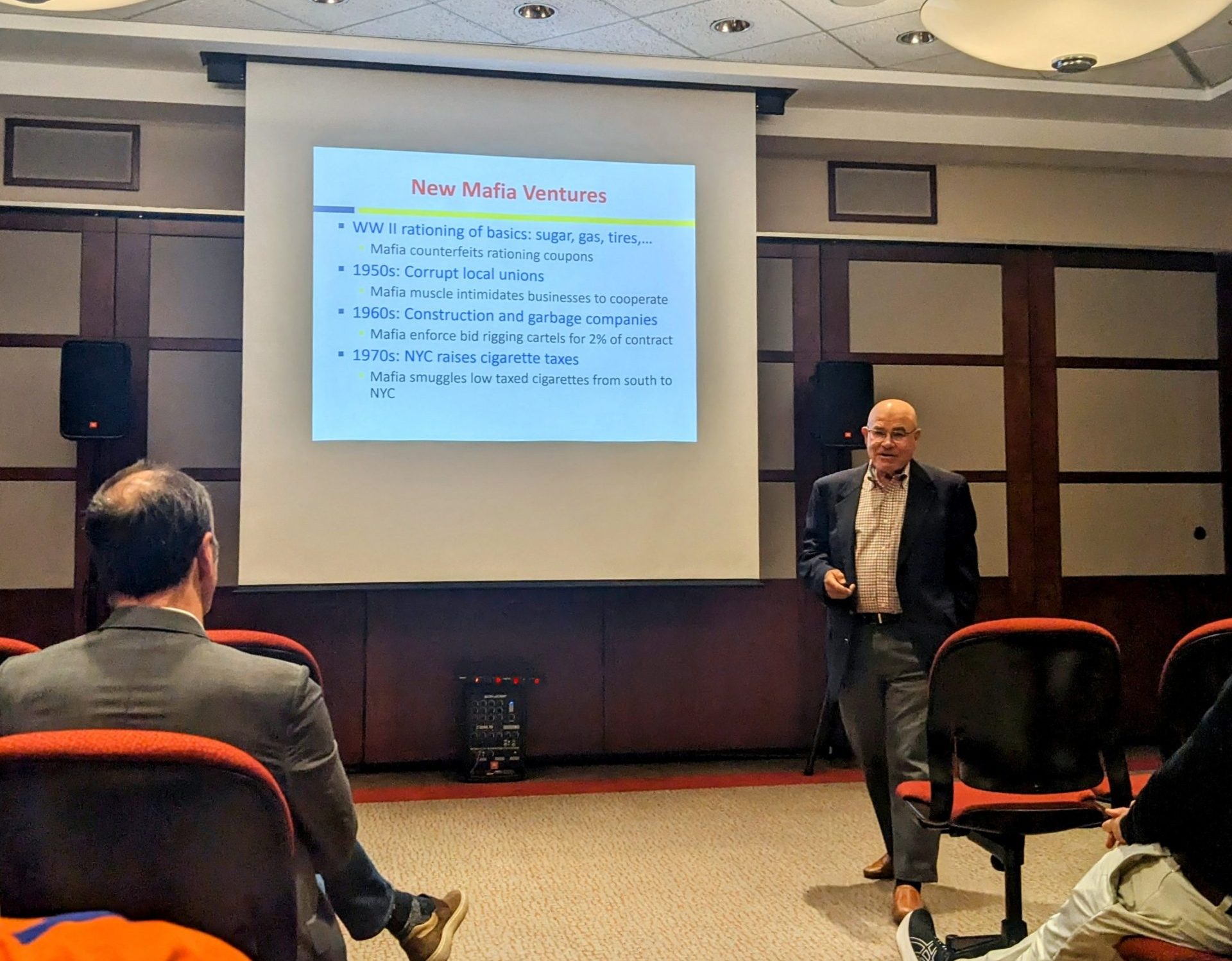Jerold Zimmerman On The American Mafias’ Business Practices
August 13, 2023

Insights@Questrom hosted a discussion with Jerold Zimmerman, author of Relentless: The Forensics of Mobsters’ Business Practices. Zimmerman came to us with an expert take on accounting and economics, over 36,000 google scholar citations, and the 2016 Outstanding Educators Award, among many other acknowledgements.
The longevity of American organized crime sparked his fascination and inspired Relentless: The Forensics of Mobsters’ Business Practices, the book he authored with Daniel Forester. Zimmerman presented the key points from this book and delved into how we can apply some of the Mafias’ business practices to law-abiding business practices. What makes it so captivating, as Zimmerman pointed out, is that crime organizations could not take advantage of courts, banks, insurance companies, CPAs, nor could they record anything, yet they survived longer than some lawful companies, like Blockbuster.
How did they do it? Zimmerman presented the four pillars of their organizational make-up. One of the most important being culture, as it first defined immoral values, then provided security, belonging, and recognition to its members. The risks and rewards were high; the crew usually kept 70-85% of the profits. After the prohibition was appealed, the Mafia was excellent at discovering new ventures like reselling of low tax cigarettes. Their structure was set up to attract, motivate, and retain members to carry out functions that benefited the entire organization, a practice that Jensen and Meckling suggested in “Theory of the firm: Managerial behavior, agency costs and ownership structure,” in 1976.
While there are many positive applications we can glean from the Mafias’ business practices, like the constant strategy re-evaluation in the face of threats, there are plenty of bad ideas. The Mafia used violence, extortion, and fear to maintain power. It can be argued that the origins of organized crime can thank racial discrimination against immigrants from 1890 to around the 1970s. They had their own form of discrimination, an example being the forbidding of women as members of the Commission, demonstrating a lack of concern for diversity.
To find out about more events like this, you can visit the Insights@Questrom website.

